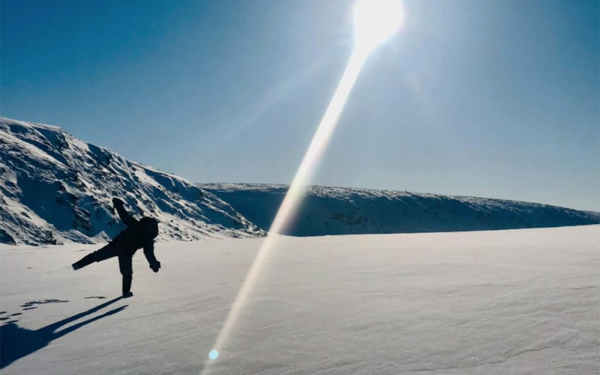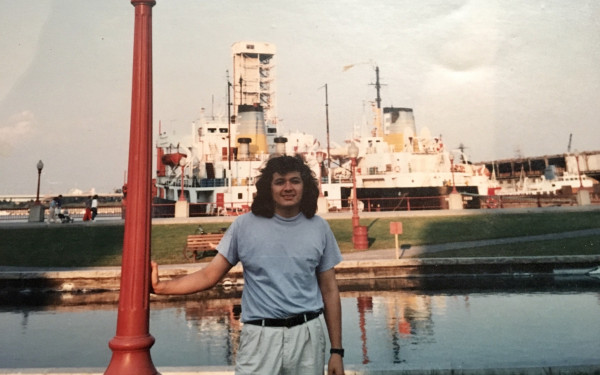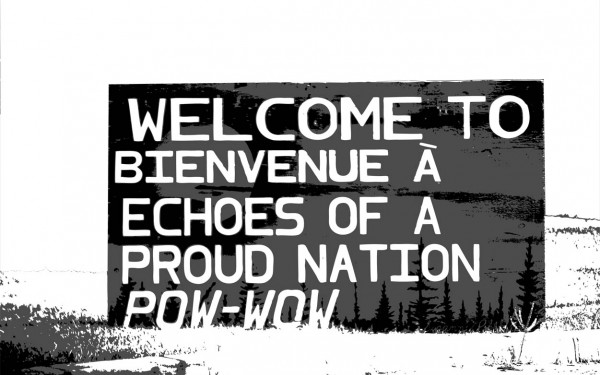Learning More Than a Language
Intensive Kanien’kéha Course a Powerful Link for Mohawk Community
Akwiratékha Martin’s grandmother, like so many of her generation in Kahnawake, didn’t see learning Kanien’kéha—the Mohawk language—as a priority for her children, or her grandchildren.
Martin’s grandmother, who went by her English name, Marina, belonged to a generation who were beaten if they spoke Kanien’kéha, and were told their language was inferior to European tongues.
But after having a stroke in the late stages of her life, Marina asked a then-17-year-old Martin to do something for her.
“Akwiratékha, promise me that you’ll speak the language,” she said. Martin responded like any teenager might: “Yeah, Ma.” Marina passed away shortly thereafter.
Martin not only kept his promise, for the past 8 years he has been helping others in Kahnawake fulfill promises they made to themselves, their relatives, their children or their community.
Never Too Late
Martin teaches an intensive 30-hour-a-week Kanien’kéha immersion course at the Language and Cultural Centre in Kahnawake called Ratiwennahní:rats. The program has existed for over three decades and has taught hundreds of students—even Martin himself.
The course’s success has resulted in its being used as a model and example for other aboriginal communities, hoping to teach and learn their own languages.
Just a few years ago, a teacher from the cultural centre went to Hawaii to share teaching strategies with the Native population there.
Martin’s current class is composed of about 17 students—some fresh out of high school, and others well into their 60s.
His students are either the grandchildren or children of Mohawks who are called the “lost generation,” according to a report by the Kanien’kehá:ka Onkwawén:na Raotitióhkwa Language and Cultural Center in collaboration with educational and counseling psychology professor Michael Hoover at McGill University.
While immersion students today are too young to have gone to residential schools, their parents and grandparents are not.
Peaking in the 1930s, residential schools were established across Canada by the federal government, with an aim to aggressively assimilate the country’s aboriginal population.
Those that did attend residential schools were often able to retain the language when they returned to Kahnawake, but were hesitant to pass the language to their children because of the negative messages taught in residential schools about speaking it.
“It makes me happy to learn the language because my grandmother can speak but she chooses not to,” said Tetiókton, one of the younger students in Martin’s class.
“She knows the language but she doesn’t speak it, she doesn’t want to. But when I do speak to her I can really see her trying to remember the language.”
“We have an inter-generational gap,” said Ienonhsaka’én:ions Stacey, the centre’s curriculum resource coordinator.
“We have an abundance of language programs geared towards children and elders who have [Kanien’kéha] as their first language, but within the community we have people in the middle who didn’t have an opportunity to learn the language and suffered most from genocide and oppression […] in terms of language retention,” she added.
Learned Identity
The Kanien’kehá:ka Onkwawén:na Raotitióhkwa Language and Cultural Center has been a crucial part of a spirit of resistance that has existed in Kahnawake for the past half-century.
According to the report written by the centre and Michael Hoover, in 1978 when Quebec enacted Bill 101, a law that tightened the vise on non-French education and services, Kahnawake responded by building the cultural centre and a Kanien’kéha immersion school, as well as language laws of their own meant to galvanize use of the language.
The same report explains that when Oka, QC, about 50 km from Kahnawake, became the site of armed confrontation between the Sûreté du Québec and Oka residents, many in Kahnawake conducted their civil disobedience—in solidarity with their fellow Mohawks—with Kanien’kéha, to ensure what they said could not be understood by police or military.
Missing out on the strong linguistic identity of Kahnawake—and the extended cultural identity that goes alongside it—was a fear of many in the class.
“When I was six years old, I remember being told that one day someone would knock on my door and they will ask who you are in your language,” said Kawenniióstha, a student in Martin’s class.
“How would it feel if you couldn’t even understand them?”
“I was brought up to be proud of who I was, but how can I be proud of who I am if I don’t know?” Tekaronhiahkhwa Standup, another student, added later.
The importance of language in the community’s identity is impossible to deny, but many of the students had difficulty articulating their sentiments towards it.
Opening up on their reasons for learning the language seemed to almost always be accompanied by an overwhelming visceral reaction—responding to the topic left several students on the brink of tears.
“There is still just so much anger that it brings up,” Standup said, as her eyes swelled up “Even though I didn’t experience residential schools I have family who did, and they passed down that hurt.”
“And it seems like it’s a completely different thing than the language—but it’s really not, and that’s why talking about it brings up so many strong feelings,” she said.
Martin and his students alike feel that, although it’s hard, learning the language is part of a healing process that the rest of Kahnawake is going through—a process they hope to continue through the next generation, through their children or by becoming teachers themselves.
“I had a lot of anger passed down from my parents and grandparents—a lot of healing I had to go through,” Standup said. “I want my children to know their identity and not carry that burden that I did,” she added.

ED1(WEB)_629_445_90.jpg)
_600_832_s.png)




3_600_375_90_s_c1.jpg)